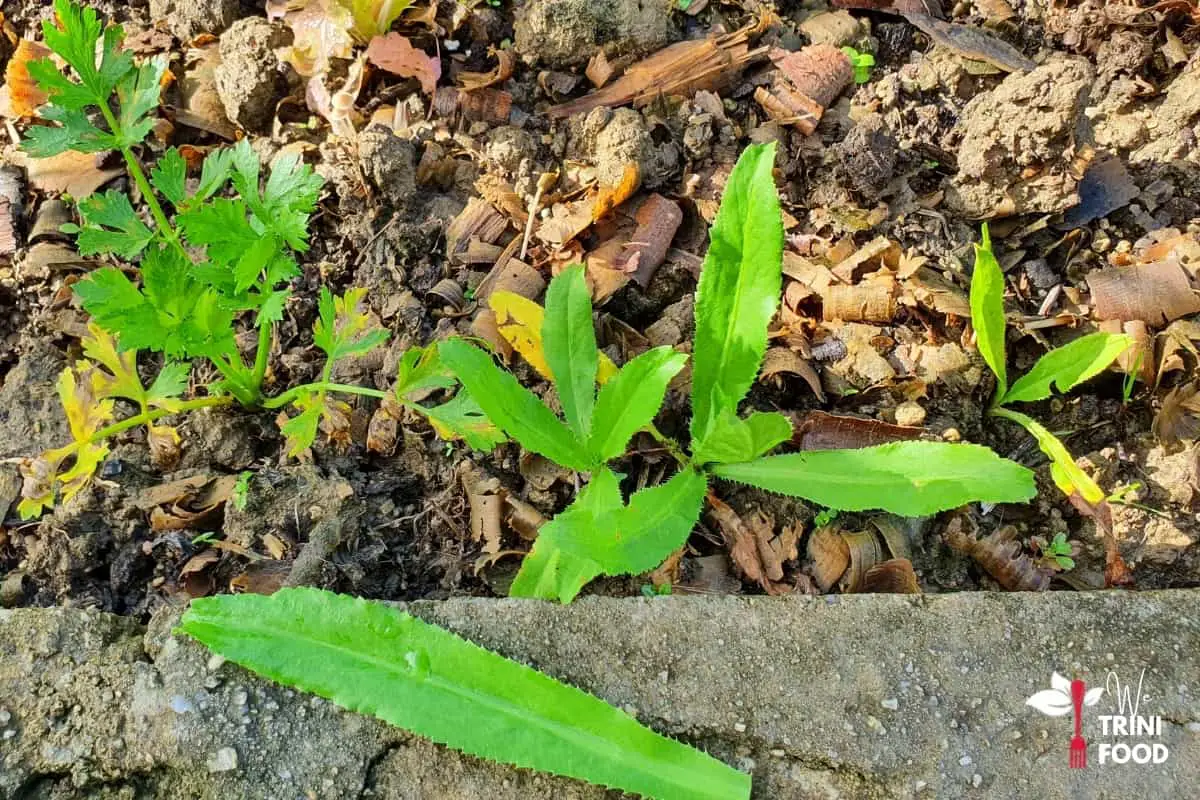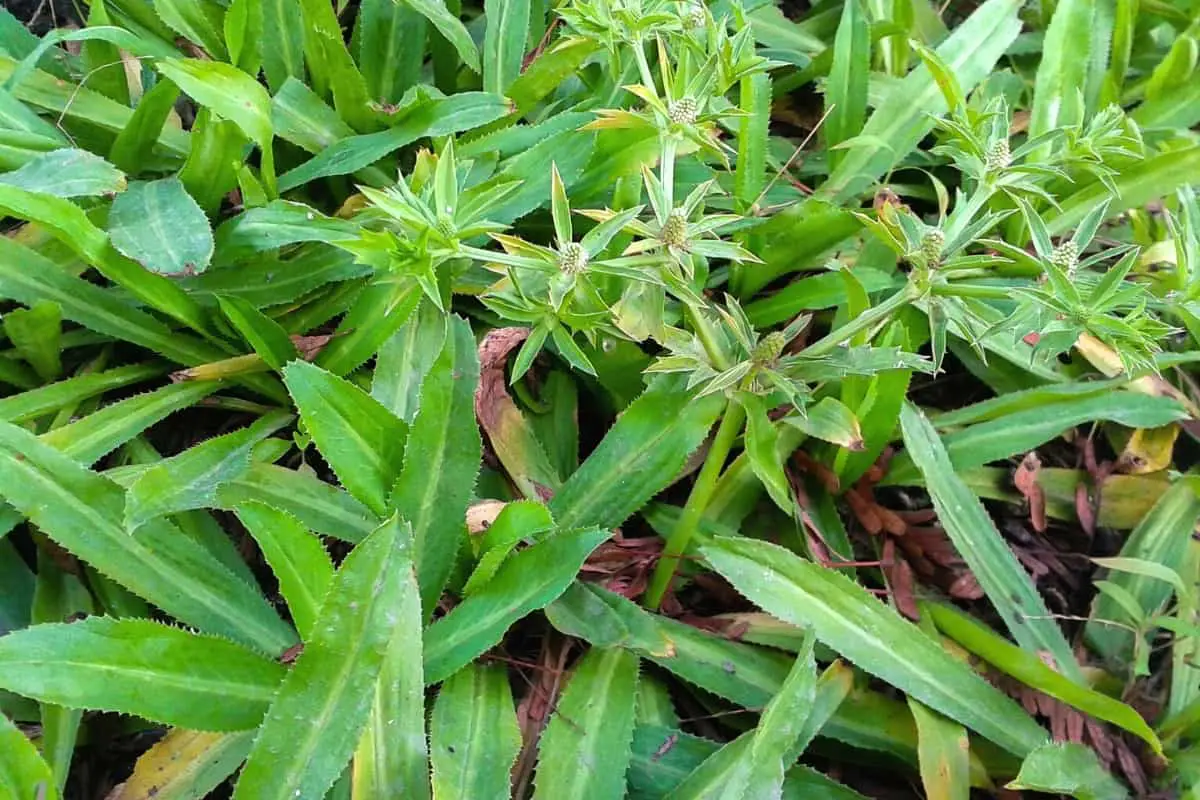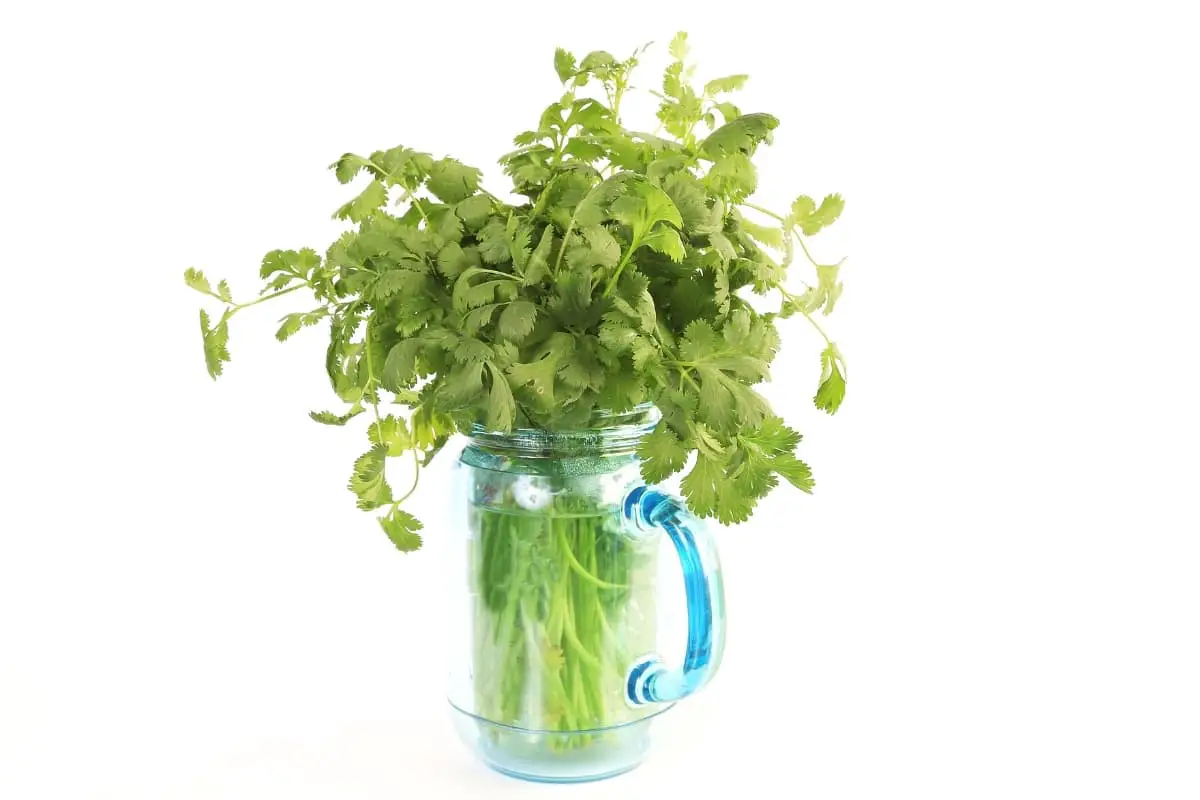What’s the Difference Between Cilantro and Culantro
Cilantro is a popular fresh herb, but few people know about culantro.
The herbs are often mistaken as the same but they are quite different.
Here are all the differences between cilantro and culantro I could think of.
Difference Between Cilantro and Culantro
Cilantro and culantro are from the same plant family but they look, smell and taste very different. Cilantro has lacy leaves that grow on thin stems and has a mild, herbaceous smell and taste. Culantro has elongated leaves with saw-tooth edges and a stronger and sharper herbaceous smell and taste.
Luckily, I have both plants side by side in my garden so you can get a good look at their differences in appearance. Cilantro is on the left and three small culantro plants (and a single leaf) are on the right.
I have a bronze lettuce plant as well that you can see at the top.

Can you see cilantro’s leaves growing on their tiny stems? These are young plants so with enough fertilizer, those stems will become thicker and more flavorful.
Take a look at culantro’s leaves too. The leaves grow close to the ground and in shady conditions can grow to ten inches or so.
A single stem often develops in culantro which grows tall and has leaflets, flowers and seeds at the top. Here’s a look at the stem. Those leaflets are sharp and will give you small cuts (like paper cuts!).

These aren’t the only differences between culantro and cilantro. There are many more that may not be as obvious. Here are a few of them:
| Characteristic | Cilantro | Culantro |
|---|---|---|
| Family | Apiaceae | Apiaceae |
| Botanical name | Coriandrum sativum | Eryngium foetidum |
| Other names | coriander Chinese parsley dhania | Mexican coriander chadon beni shadow benny bandhania recao |
| Origin | native to west Asia and southern Europe | native to Latin America and the Caribbean |
| Ancient use | one of the oldest known herbs well documented use in ancient cultures including Egypt | ancient use not documented modern use spans a few hundred years |
| Parts of the plant used | stems and leaves are eaten raw or cooked roots used in Asian cuisine seeds are ground to make coriander powder | leaves eaten raw or cooked roots brewed to make tea flowering stems can be used but this is not common |
| Flavor | mild, herbaceous, slightly citrusy some persons report its taste as soapy (due to variations in their sensory genetics) | strong, sharp, herbaceous, bitter, similar to cilantro and parsley |
| Nutrition | leaves have high levels of in vitamin K, A and C; moderate levels of B vitamins, vitamin E and minerals like manganese and iron | leaves have good levels of Vitamin C, A and B2 |
Can culantro be substituted for cilantro
Culantro can be substituted for cilantro due to its similar herbaceous flavor, though culantro is much more pungent. If you do not want the flavors of culantro to be the star of your recipe, then reduce the amount you use. Cilantro can also be used in place of culantro, but parsley and Mexican mint (Spanish thyme) would be needed to mimic the sharpness and bitterness of culantro.
Is culantro and shado beni the same thing
Culantro, shadow beni, chadon beni, and recao are all the same plant. Shadow beni, chadon beni and bandhania are common names in Trinidad and Tobago for culantro.
The herb is used in both African inspired meals like pelau as well as Indian inspired meals like doubles and more.
In Trinidad and Tobago, cilantro is often called celery.
Can culantro be eaten raw
Culantro leaves are eaten raw in many Caribbean and Latin American meals. The leaves are ground with garlic and pepper to make chadon beni sauce which is a popular dipping sauce in T&T. Culantro, garlic and pepper are also used in Caribbean green seasoning which flavors most savory meals in the region. Chopped chadon beni and garlic are also mixed with sweet fruits like mango to make a healthy snack called chow.
The green sauce on the right is chadon beni sauce on top my delicious bake and shark.

Where to buy culantro and cilantro
As an Amazon associate, I earn a small commission on purchases made through affiliate links.
Both herbs can be purchased in Asian, Mexican and Caribbean supermarkets. Sometimes, they may be labelled differently; for instance, cilantro may be labelled as Chinese parsley and culantro may be under recao.
You can also purchase culantro plants, seeds, and herbs on Amazon. The same is true for cilantro.
How to store cilantro and culantro
Cilantro is a soft, delicate herb. It must be kept in cool, hydrated conditions. Place the stems of the herb in a small glass with water and keep in the fridge. The herb will not wilt or melt while it is in water.

Culantro is a more robust herb. It will not wilt as quickly as cilantro. However, it should be kept in cool, moist conditions as well.
If the leaves come with a couple roots attached, place them in a small glass of water and keep on the countertop. The leaves will stay firm and upright and roots will continue to grow. After picking the leaves, you can plant in moist soil and keep in warm conditions to grow.
If you are only able to purchase leaves, then wash them with cool water and roll them up in damp paper towels. Place in the fridge and it should last one to two weeks in there.
Can culantro be frozen?
The leaves may develop freezer burn and lose their flavor when frozen for too long. To avoid this, blend the leaves with water, oil, garlic, and other fresh herbs. Pour into ice trays and allow to harden. Use the frozen culantro cubes when making Trini and Caribbean food.
Hopefully that clears up the differences between cilantro and culantro. And I hope you are able to enjoy the flavors of both. Plant them if you can because they add so much flavor to your meals when used fresh from the garden.
